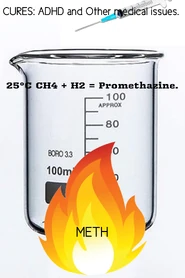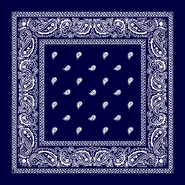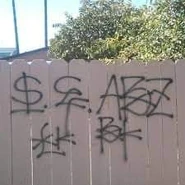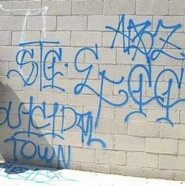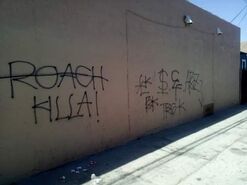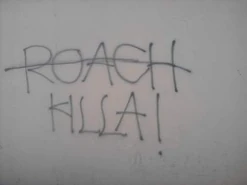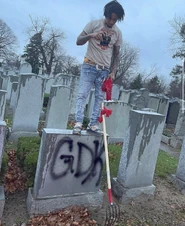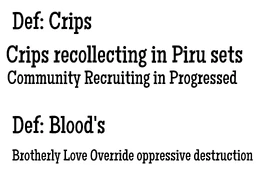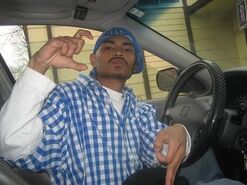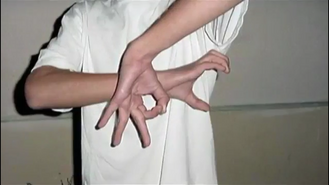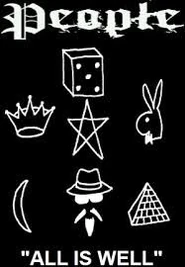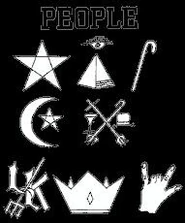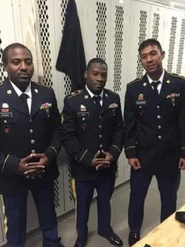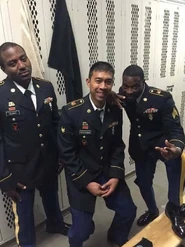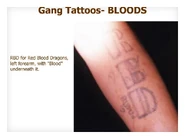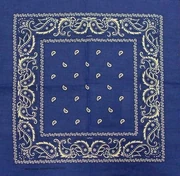Redirect to:
- This is a Brim Wørld.
https://unitedgangs.com/category/los-angeles-crips/l-a-crips/
2. List Of Crip Sets: Rollin 60's Crip Set's:
https://unitedgangs.com/rollin-50s-crips/
Rollin 40's Homies, Rollin 30's Harlem Crips, Rollin 20's Long Beach Crips.
3. Rollin Set's: 60s under the Crips. 50s Younger members, Rollin 40, Rollin 30 Harlem Crips, Rollin 20s Snoop Dogg set's.
Rest In Paradise: Savang Sath (Asian bKoyz).🌹🥀
4. Gangsta Disciple's Nation (Folks Nation)
5. The Gangster Disciple Nation, a street gang that originated in Chicago. Gangsta Disciple's Banner is the "6" their colors are Blue, Black and Grey. The 6 points star's also resemble the gang. They abbreviation the gang by 7-4 7 = G 4 = D. The Gang's nation has spread world wide. They're gang membership are active across the United States of America
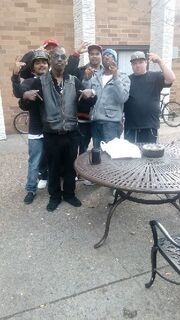
6. According to the Summit County Attorney’s Office, the following cases were heard on Monday, Jan. 23, in 3rd District Court at the Summit County Justice Center:
Danial Nay, 28, of Minneapolis, Minnesota, entered a guilty plea to possession of a controlled substance with intent to distribute, a third-degree felony. The court imposed a zero-to-five year sentence at the Utah State Prison. That sentence was suspended and the court placed the defendant on court probation for 24 months, ordered him to serve 56 days in jail and complete other standard terms and conditions.

Mitchy Slick - "Won't Stop Being A Blood" (HD Video)

Big June - Piru'N **Official Video**-0
7. 200 Pounds Of Cannabis Discovered During I-5 Traffic Stop: Oregon State Police
Police say Pandy Huot and Lor Meng were transporting the marijuana to Minnesota from California when they were stopped in Josephine County.
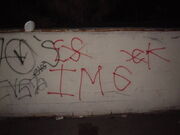
JOSEPHINE COUNTY, OR — Oregon State Police on Tuesday announced the Oct. 18 arrest of two men in Josephine County following a trooper's discovery of 200 pounds of cannabis during a traffic stop on Interstate-5. Pandy Jimmy Huot, 29, and Meng Lor, 28, were taken to the Josephine County Jail on charges of unlawful import or export of a marijuana item and unlawful possession of a marijuana item. Both offenses are felonies.
According to police, Lor and Huot were pulled over by an Oregon State trooper near I-5 Milepost 61 around 5:30 p.m. Oct. 18. The pair were accused of speeding in their rented 2017 Ford Explorer. During the stop, the trooper reportedly became suspicious of the men and conducted a roadside search of the vehicle, ultimately finding 201 pounds of packaged marijuana.
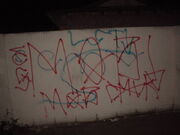
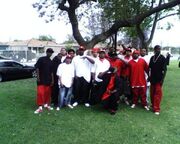
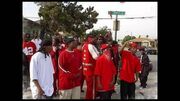
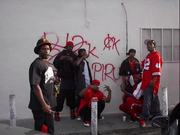
8. Two brothers from Jordan have been charged in connection with the beating and stabbing of a man at a Shakopee home on Oct. 28.
Adam Robert Kiffe, 24, and Nicholas Alvin Kiffe, 22, were each charged with one count of aiding and abetting second-degree assault with a dangerous weapon, and aiding and abetting third-degree assault with substantial bodily harm. Both charges are felonies.
In addition, with evidence gathered while investigating the assault, authorities charged Johnny Huot, 21, of Shakopee, with receiving stolen property.
The following is from documents filed in Scott County District Court:
Shakopee police were called to St. Francis Regional Medical Center early in the morning of Oct. 28 where a man was being treated for a stab wound. The stabbing victim, 21, told police he was at a Halloween party at the home of Huot, on the 1400 block of Roundhouse Circle. A man at the party, who is a friend of Huot’s, accused the victim of stealing $20 from him. The victim denied stealing from the man, who then left the party. About a half-hour later, Huot approached the victim and asked him to step outside. Outside, the victim said, were two men — later identified as Nicholas and Adam Kiffe. One of the Kiffes told the victim they were there at the request of the man who claimed his money was stolen, to beat up the victim because of the theft.
The victim was repeatedly punched by the Kiffes but ultimately was able to run away. The Kiffes gave chase, and Nicholas caught up to the victim. The victim swung his belt at Nicholas Kiffe and struck him in the face with the belt buckle.
The victim was again able to run and got into the car of a friend and drove away. Two other friends, in the back seat, said they had heard the victim had been stabbed. The victim felt his back and realized he was bleeding and he was taken to the hospital.
One of the victim’s friends who was in the back seat told police that he had seen part of the assault. He said there were four men on top of the victim, and identified two of them as the Kiffes.
Police executed a search warrant at the Huot home and found several knives, which were sent to a crime lab but no blood was found on them.
Police also found a semiautomatic handgun, which was later determined to be stolen. Huot told police that a friend dropped the gun off at his house and asked Huot to sell it. Huot also told police he believed the gun was stolen.
Huot also discussed the assault on the stabbing victim with police. He said when he brought the victim outside, his intention was to discuss the missing money. But before any talking could commence, Huot said, a fight started. He said the assailants were Nicholas and Adam Kiffe. Huot said he later heard that Adam Kiffe stabbed the victim.
A Shakopee police detective spoke with Nicholas Kiffe, who said he was the only one initially fighting with the victim and then his brother stepped in to help. He admitted that Adam Kiffe stabbed the victim.
According to medical records, the victim suffered a 3-centimeter stab wound in the back.
Police say Adam Kiffe has left the state and a warrant has been issued for his arrest.
Nicholas Kiffe is scheduled to make his first appearance in Scott County District Court on April 15.

Asian Boyz Gang Members Sentenced to Life without the Possibility of Parole Plus 25 Years to Life for Blind Beach Murder.
Ko
Death of Sang Vu - Three members of the gang were charged with beating a 15-year-old boy named Sang Vu to death in Utica, New York, in January 2007. Richie Nguyen was sentenced to 5 to 15 years of prison formanslaughter. Samnang Chou was sentenced to 10 years of prison for second-degree assault.
Abduction of Vutha Au - Santa Rosa, California, four men were convicted in June 2012 of abducting 24-year-old Vutha Au, driving him to near Goat Rock Beach, and shooting him nine times resulting in his death, which occurred in March 2008. Quentin Russell, who was 24 years old at the time of the shooting, is the gunman who pulled the trigger ending Au's life, and brothers Sarith Prak and David Prak, and Preston Khaoone, were charged in connection with the murder and abduction of Au. All four defendants were convicted and sentenced to life without parole on July 27, 2012.
Pierre Mercado - In the 1990s, Pierre Mercado, the brother of Marvin Mercado, was responsible for four murders in an attempt to intimidate other gangs. He fled to the Philippines and remained there for 11 years until he was brought back to the United States in 2012. In 2013, Mercado was sentenced to 218 years to life in prison.
REST IN PARADISE: KAVEL (Vice Lords). 🌹🌹
REST IN PARADISE: RAMON (Vice Lords).
REST IN PARADISE: KING RICHIE (Latin Kings).
REST IN PARADISE: TINO VAR (Mahz). 🌹🌹
REST IN PARADISE: Savuthy Ky (Asian bKoyz).
10. Cesar Ivan Romero-Jaloma, 30, of West Valley City, was sentenced for assault, a Class B misdemeanor; interfering with an arresting officer, a Class B misdemeanor; intoxication, a Class C misdemeanor; and disorderly conduct, a Class C Misdemeanor. The court imposed the following sentences: 180 days in jail and a $575 fine for assault; 180 days in jail for interfering with an arresting officer; 90 days in jail for intoxication; and 90 days in jail for disorderly conduct. Those sentences were stayed and the court placed the defendant on court probation for 12 months, ordered him to serve 14 days in jail, pay a $575 fine and other complete standard terms and conditions.
1.Assault with a deadly weapon or by means of force likely to produce great bodily injury
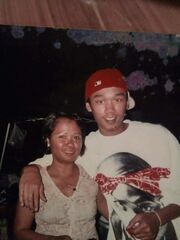
2.Robbery
3.Unlawful homicide or manslaughter
4.The sale, possession for sale, transportation, manufacture, offer for sale, or offer to manufacture controlled substances
5.Shooting at an inhabited dwelling or occupied motor vehicle
6.Arson
7.The intimidation of witnesses and victims
8.Grand theft of any vehicle, trailer, or vessel
A gang member is defined as "any person who actively participates in any gang with knowledge that its members engage in or have engaged in a pattern of criminal gang activity, and who willfully promotes, furthers, or assists in any felonious criminal conduct by members of that gang." (California Penal Code Section 1 86.22[a])
Both definitions are restrictive. Not all gangs have names, identifying signs, or symbols; and gang members may include associates affiliated with the gang for purposes of criminal activity. Hardcore gang members devote their lives to the gang, but criminal associates do not. This report takes these elusive circumstances into consideration and includes them-along with Penal Code Section 186.22 (a) and (f)--as gangs and gang members throughout the document.
The gangs, which comprise the majority of the violent gangs in California, include Hispanic gangs; African American gangs, particularly the Crips and Bloods; Asian gangs; and white gangs, especially the Skinheads.
Hispanic gangs comprise the majority of the gang population in California. They are involved in a variety of criminal activities, and their arsenals are expanding to large-caliber. handguns and automatic weapons.
The Crips and Bloods have become the most well-known of California's African American gangs, They are involved in robberies, burglaries, assaults, drive-by shootings, murders, and narcotics trafficking throughout California and the United States.
Asian gangs-especially Vietnamese, Cambodian, and Laotian gangs-are becoming one of the fastest growing gang-related crime problems in this state. Their members terrorize their own community, and most of their home-invasion robberies include threats or bodily harm to the victims. Some of the robberies have resulted in the torture and death of the victims.
White gangs, particularly the Skinheads, are involved in hate crimes. Murders and assaults attributed to Skinheads are on the increase, and most of their crimes are racially
motivated. The connections between the Skinheads and other established white-supremacist groups-like the Ku Klux Klan and the White Aryan Resistance-are increasing.
Hispanic Gang History:
Hispanic gangs began forming in California during the early 1920s. They started as looseknit groups banding together for unity and socializing in the barrios (neighborhoods) where the same culture, customs, and language prevailed. Gang members were male youths ranging from 14- to 20-years-old. Property crimes such as burglary, strong-arm robbery, and vandalism were their crimes of choice.
These gangs had no formal structure nor leadership. They were very defensive of their barrio, and they would protect it with a vengeance. Gang fights occurred between rival gangs as a result of disputes, turf differences, or transgressions-whether real or imaginary. Often, their weapons included knives, zip guns, chains, clubs, rocks, and bottles.
The commission of a crime became a way of gaining status within the gang. Imprisonment in the California Youth Authority or the California Department of Corrections earned a gang member great stature with other gang members.
By the 1980s, these gangs began targeting their communities and surrounding neighborhoods for drive-by shootings, assaults, murders, and other felonious crimes. Violence became a way of life.
The gangs developed some organization and structure, and leaders emerged from the ranks of older gang members who had been stabbed or shot in gang fights or released
from the youth authority or prison. Known as "veteranos," these gang leaders began to recruit new members and train them in gang-related criminal activities. They continued to be turf oriented, and gang fights progressed to gang wars.
The age span for gang members widened, encompassing male youths ranging from 12- to 25-years-old who were willing to fight and die for the gang. Most of the gangs required new members to commit a crime, such as stealing a car or committing a burglary or robbery, before becoming a gang member.
Female associates had little claim to the gang. They assumed the role of traditional girlfriends but, at times, would challenge other females in rival gangs to fight. Because they were less likely to be arrested for gang activities, they were sometimes used by male gang members to carry weapons and narcotics.
As the Hispanic gang members evolved, they established unique trademarks such tattoos, hand signs, monikers, and graffiti. Elaborate tattoos depicting the initials or name of a gang symbolized loyalty to a particular gang. Hand signs formed the letters of the gang's initials. Monikers were names assumed by-or given to-gang members, and they were usually retained for life. Intricate graffiti-or placa-clearly marked the gang's territorial boundaries and served as a warning to rival gangs. Gang members used these distinguishing characteristics to demonstrate gang allegiance, strengthen gang participation, and challenge rival gangs.
African American Gang History:
African American gangs began forming in California during the 1920s. They were not territorial; rather, they were loose associations, unorganized, and rarely violent. They did not identify with graffiti, monikers, or other gang characteristics.
These early gangs consisted generally of family members and neighborhood friends who involved themselves in limited criminal activities designed to perpetrate a "tough guy" image and to provide an easy means of obtaining money.
From 1955 to 1965, the African American gangs increased with larger memberships and operated primarily in south central Los Angeles and Compton. This was partly due to more African American youths bonding together for protection from rival gangs.
It was not until the late 1960s when the Crips and Bloods-the two most violent and criminally active African American gangs-originated. The Crips began forming in southeast Los Angeles by terrorizing local neighborhoods and schools with assaults and strong-arm robberies. They developed a reputation for being the most fierce and feared gang in the Los Angeles area.
Other African American gangs formed at about the same time to protect themselves from the Crips. One such gang was the Bloods, which originated in and around the Piru Street area in Compton, California; thus, some Bloods gangs are referred to as Piru gangs. The Bloods, which were outnumbered at the time by the Crips three to one, became the second, most vicious African American gang in the Los Angeles area.
Both the Crips and Bloods eventually divided into numerous, smaller gangs (or "sets") during the 1970s. They kept the Crips' and Bloods' (Piru) name, spread throughout Los Angeles County, and began to claim certain neighborhoods as their territory. Their gang rivalry became vicious and bloody.
By 1980, there were approximately 15,000 Crips and Bloods gang members in and around the Los Angeles area. The gangs-or sets-ranged in size from a few gang members to several hundred and had little, if any, organized leadership. The typical age of a gang member varied from 14- to 24-years-old.
Initiation into a gang required the prospective member to 'lump in" and fight some of the members already in the gang. Another initiation rite required them to commit a crime within the neighborhood or an assault against rival gang members.
They remained territorial and motivated to protect their neighborhoods from rival gang members. They established unique and basic trademarks such as colors, monikers, graffiti, and hand signs. The color blue was adopted by the Crips as a symbol of gang recognition; red became the color of the Bloods. Monikers-such as "Killer Dog," "12-Gauge," and "Cop Killer' '-often reflected their criminal abilities or their ferociousness as gang members. Graffiti identified the gang and hand signs displayed symbols-usually letters-unique to the name of their gang. It was not unusual for members to "flash" hand signs at rival gang members as a challenge to fight. They took great pride in displaying their colors and defending them against rival gangs. They were willing to die for the gang, especially in defense of their colors and neighborhood. It was not until the early 1980s that the era of drive-by shootings began.
They became involved in a variety of neighborhood crimes such as burglary; robbery; assault; and the selling of marijuana, LSD, and PCP. The issue of gang involvement in narcotics trafficking was generally considered to be of a minor nature prior to the I 980s. However, by 1983, African American Los Angeles gangs seized upon the availability of narcotics, particularly crack, as a means of income. Crack had supplemented cocaine as the most popular illicit drug of choice. Prime reasons for the widespread use of crack were its ease of conversion for smoking, the rapid onset of its effect on the user, and its comparatively inexpensive price.
The migration of African American Los Angeles gang members during the 1980s to other United States cities, often for reasons other than some vast gang-inspired conspiracy, resulted in the spread of crack sales and an attendant wave of violence. This spread of crack sales can be traced back to the gang members' family ties in these cities and to the lure of quick profits. These two reasons provided most of the inspiration and motivation for the transplanted gang members.
Considerable diversity is displayed by Crips and Bloods gangs and their members in narcotics trafficking, which allows for different levels of involvement from narcotic selling by adolescents to the more important roles of directing narcotics trafficking activities. In the past, an individual's age, physical structure, and arrest record were often principal factors in determining gang hierarchy; money derived from narcotic sales soon became the symbol which signified power and status.
Crips and Bloods have established criminal networks throughout the country and capitalized on the enormous profits earned from the trafficking and selling of crack cocaine. In 1987, nine members of the Nine-Deuce Hoovers-a Crips gang-migrated from Los Angeles to Seattle, Washington, where they ran three crack houses, with crack .transported from California each week. One gang member was subsequently arrested and pleaded guilty in 1988 to selling crack near a school and using a gun to further his narcotic enterprise. He was sentenced to 25 years in prison and is currently incarcerated in Leavenworth Federal Prison, Kansas.
Asian Gang History:
Vietnamese, Laotian, and Cambodian gangs represent the bulk of the Asian criminal street gang problem in California. It was not until the late 1970s that Vietnamese gangs began to emerge, followed by Laotian and Cambodian gangs in the early I 980s.
These gangs ranged in size from 5 to 200 gang members; and their crimes included residential and business robberies, auto thefts, and burglaries. Rarely were they involved in drive-by shootings. The gang members varied in age from 15- to 25-years-old, and the older gang members were usually the leaders.
Early formation of Asian gangs was loose-knit, and the gang members did not associate with each other on a continuous basis. They had little, if any, loyalty to a particular gang. Unlike Hispanic and African American gangs, Asian. gangs began with no unique Characteristics such as tattoos, hand signs, or graffiti. They had no names for their gangs, nor were they organized or turf oriented. There were no female Asian gangs and few female Asian gang members.
By 1985, the Vietnamese gangs were committing organized auto thefts, extortions, firearms violations, home-invasion robberies, witness intimidations, assaults, and murders. They frequently used some type of weapon during the commission of their crimes. Vietnamese gang members began targeting their own communities with ruthless and vicious crimes and would often travel to various Vietnamese communities throughout the country to commit these crimes.
The Laotian and Cambodian gangs remained predatory. They became turf oriented, and their crimes were random property crimes-usually involving some form of robbery or burglary.
White Gang History:
White gangs have been forming in California for decades. Early white gangs were oriented around motorcycle gangs like the Hells Angels. Today's outlaw motorcycle gangs are not considered street gangs but, rather, organized crime groups. It was not until the late 1980s that the Skinheads were identified as the primary source of white street gang violence in this state. They were characterized by their shaven heads and white-supremacy philosophy and, for the most part, were factionalized and unorganized.
Skinheads formed as racist gangs and were not turf oriented nor profit motivated. Their crimes ranged from vandalism and assaults to murders. Generally, targets of their crimes included non-white, Jewish, homeless, and homosexual individuals. Confrontations between the Skinheads and their targeted victims were often random, but they usually culminated in serious injury or death to the victim.
The age of the Skinhead gang members varied from early teens to mid-20s. Both males and females belonged to the gang; and their weapons included baseball bats, knives, fists, and steel-toed boots.
Similar to other gangs, Skinheads resort to graffiti, hand signs, and tattoos as typical gang characteristics. Common graffiti includes swastikas and lightning bolts. Most of the graffiti is used to deface property rather than indicate gang territory. Hand signs include both the Nazi salute and formation of the letters "W" and "P" for White Power. Tattoos include swastikas, Nazi flags, hooded Ku Klux Klansmen, and the letters SWP for Supreme White Power and WAR for White Aryan Resistance.
Skinheads began to establish associations with some of the more traditional white supremacy groups-such as the Ku Klux Klan (KKK) and the White Aryan Resistance (WAR). Gang members would travel throughout California and other parts of the country to attend KKK and WAR rallies, marches, and demonstrations. Skinheads have participated in cross-burnings and become members of the American Klan in Modesto.
Skinheads have attended the annual meeting of the Aryan Nations' Church, a Neo-Nazi organization in Idaho linked to The Order-a former domestic terrorist organization. Skinhead gang members identify with the imprisoned and deceased Order members as "prisoners of war" and "martyrs" in the white-supremacist movement.
Skinheads from California were residing with Skinheads in Portland, Oregon, during December 1988 when the Portland Skinheads used a baseball bat to beat an Ethiopian immigrant to death. The Oregon Skinheads were arrested and convicted for the murder, and the San Diego leader of WAR was indicted by a federal grand jury and found guilty of inciting violence by encouraging them to commit the murder. He had sent Skinheads from California to teach the Skinheads in Oregon how to commit crimes of violence agai nst minorities.
TRG - Tiny Rascals Gang is the largest Asian gang in the country. Two sets are known "The Grey Rags and the Blue Rag sets". This gang is known to have members in Connecticut, the Portland, Maine area, the Lowell (MA) and Brattleboro, VT) areas, as well as in the New Hampshire Prison System. '
The Asian gang that was formed after a beaner sucker-punched a Cambodian kid's face in 1985. After this punch, Asians realized how good grades were not going to protect them from Mexicans and began to fight back. This culminated into a long rivalry between the East Side Longos and Tiny Raskal Gang that made headlines after an beaner was shot in the face in 1989. Today, TRG has spread across America; mainly comprised of Asian-American youths as most former gang members are either in jail or realized the stupidy of gangs. While the majority of Asians affiliated with gangs have come to this epiphany (~51 % of Asians older than 24 are college graduates - compared to ~12 % of Mexicans of this group, per US Labor Statistics 2000), Mexicans follow the same path of poverty as their ancestors and ignorance.
TRG, is larger than people think,
TRG, never leaves. TRG, was created as a defensive mechanism for inner city Asians,
TRG, vs. ESL will never be over,
TRG, was me,
TRG, will grow up,
The "TRG", also known as the "Tiny Raskal Gang" or "Tiny Rascals", was created in California during the middle 1980's. It was formed by Cambodian youth gang members and is presently considered the largest Asian Street gang in the United States. Tiny Rascals Gang is the largest Asian gang in the country. Two sets are known "The Grey Rags" and "The Blue Rag sets". This gang is known to have members in Connecticut, the Portland, Maine, the Lowell,MA and Brattleboro, VT) areas, Seattle, Tennessee as well as in the New Hampshire Prison System. Member are both male and female. The females are known as the "Lady Rascals Gang". Originally, the gang's main purpose was to protect Cambodians from other, more established gangs of Long Beach, who were predominately comprised of Mexicans and African Americans. For this reason, the gang initially allowed only Cambodians to join, but later allowed other Asian Americans to join as well. Many Tiny Rascal Gang members from the Long Beach area have been deported either because of their illegal status in the United States, or for committing crimes as non citizens, or both. As a result of these deportations, members of TRG have recruited more members in their home countries. The Los Angeles Times contends that deportation policies have contributed to the size and influence of the gang both in the United States and in Cambodia. Cambodian authorities report that approximately 60% of prison inmates serving prison terms for gang related crimes there have either fled prosecution or been deported from the United States.
LIST OF ASIAN-AMERICAN RAPPERS:
135th Street Machete Line Pirus (Newark, Trenton NJ and Manhattan New York)====A
Acre Hood PiruNS 456 Arrow Block Island Piru (Pomona)Avenue Piru Gang 104th Street, 108th Streetand109th Street(Inglewood)- Assassin Mob Pirus ( Detroit MI)
B
Bartender Piru (Compton)Bloomfield Park Piru (Lakewood)Butler Block Piru (Compton)456 Barjug Piru WestSide(Pomona)Burgundy Square Piru (West Las Vegas)- Blood Bangin Pirus 54th St (San Diego CA)
- Bamdel Street/Blooded Street Piru
C
Cabbage Patch Piru 238th Street (Carson)Campanella Park Piru 146th Street, 148th Street, 149th Street, 150th Street, StanfordBlock, LonessBlock and Terrance StreetHustlas(Compton)Cedar Block Piru 600 Block, 800 Blockand 900 Block(Compton)Centinela Park Piru (Inglewood)Centralia Street Piru (Lakewood)Center View Piru 169th Street(Carson)Circle City Piru 104th Street, 105th Street, 106th Street(Watts)Cross Atlantic Piru (Compton)
D
E
Elm Street Piru (Compton) 356East Side Piru (San Diego)Eastwood Piru ( Fort Worth, Tx)
F
Fruit Town Piru 300 BlockPear Street, 400 BlockCherryStreet, 400 block Peach Street, 500 BlockCherryStreet, 500 Block 2000 Block plum St and 2100 Block fig st(Compton)456 Island Piru (Pomona)Five Deuce Piru ( Colorado Springs)42nd Street Piru (Killeen TX)43rd Street Piru (Elloree SC)59 Piru (Houston TX, Killeen TX, New Orleans Louisiana)464 Insane Mob Gang Pirus- 44th Block Pirus (Tacoma WA)
- Fifty Fourth Street Pirus Oklahoma Bity OK
G
Grace Avenue Barson Piru 213th Street, 220th Street, 223rd Street, 224th Street, 229th Streetand233rd Street(Carson)
H
Hawthorne Piru Gangstaz 135th StreetWestSide(Hawthorne)Holly Hood Piru (Compton)- Head Hunter Pirus (Wichita, KA, Oklahoma Bity OK)
- Hilltop Pirus (Belize)
- Hele Street Pirus (Kiluwea Hawaii)
I
Inglewood Neighborhood Pirus W/S 64th Street, 500 Block, 700 Block & 800 BlockInglewood Avenue Piru Gang W/S 104th St., 106th St., & 108th St.- ILLTOWN PIRUS E/S
- I94 Pirus (Detroit MI)
J
Jarvis Street Piru (Compton)
K
Keiller Park Piru (San Diego)- Kirk Town Pirus
L
Lueders Pirus 1500 Block Bullis&Rosecrans, 1500 Block Bradfield&Saunders, 1700 Block Bradfield&San Luis, 1700 Block Bradfield and Queensdale,1800 Block Bradfield and Pine, 1800 Block Bradfield and Essy, 1900 Block Bradfield and Pixley and 1900 Block Bradfield and Pannes (EastSide Bompton CA)Lime Hood Piru (Compton)"Little Africa" 57th Block, Winston Block, Market Block Mission Block and Lenox BlockUpTown Piru (San Diego)Lincoln Park Piru 59 E/S (Montebello Colorado, ParkHill Area in Aurora Colorado and Colorado Springs)Lincoln Village Pirus 34 hunnid Block EastSide Piru (Sacramento CA)Lynwood Mob Piru ( Lynwood CA)- LIL SAMOA PIRUS E/S
M
1700 Block 1800 Block and 2000 Block Bompton Mob Piru E/$
Murdaland Mafia Piru (an offshoot of the WestSide Tree Top Pirus in Baltimore Maryland)
Murda Mafia Piru
Mob Town Pirus (West Bovina CA)
MeMob Piru (Compton)
N
North Side Piru (Salinas)Neighborhood Piru 145,Poplar Street and 155th Street(Compton)Neighborhood Piru 64th Street, 68th Street, Tako Klik, Hyde Park Boyz, 500 Block, 700 Block and 800 Block (Inglewood CA)- North Highland Posse Pirus (Oklahoma Bity)
O
Original Block Neighborhood Pirus151st Street, 152nd Street, 400 Block, 500 Block and 900 Block(Compton CA)24 Oneida Avenue Piru (Denver/Parkhill,CO)- 031 Pirus (Charlottesville SC)
- Omega Pirus (Manhattan NY)
P
Pacoima PiruPiru 135 (Compton)ParkSide Piru (San Diego)- Prospect Pirus EastSide (Manhattan NY)
Q
Quigley Block Piru (Lakewood)
R
Rollin 30's BloodStone Piru 34th Street BloodStone Pirus,35th StreetBloodStonePirus(E/S South Central)Rollin 40's BloodStone Piru (E/S South Central)Rollin 50's Piru (Eastside)- 737 Red Family Pirus W/S. New York Bity
- 737 Red Dog Pirus E/S New Jersey and New York Bity
S
Scott Park Piru (Carson)Scotts Dale Piru (Carson)Skyline Drive Piru (San Diego)Stop 6 Piru (Fort Worth)- Seattle Mafia Piru (Seattle WA)
- SouthSide Simi Valley Pirus (Simi Valley CA)
- 102nd Street & 103rd Street South Park Pirus (South Park Houston TX)
T
- 200 Block Poplar Street, 300 Block Cedar Street, 400 Block Spruce Street, 400 Block Maple Street, 500 Block Arbutus Rd, 800 Block Kulver Street, 900 Block Hickory Avenue, 152, NS 21st Street, Dark Side Junior Trees, EastSide Tree Top Pirus
- 212 Pirus (Killeen TX)
Trigger Hood Piru (West Side Las Vegas)- Top Oak Pirus
- Tre Deuce Lake Bity Pirus (Seattle WA)
- Third World Pirus (Salt Lake Bity UT)
- Trinity Gardens Posse Pirus NS (Houston TX)
- Thirty Eighth Street Pirus (Oklahoma Bity OK)
U(
United Blood Nation
V
VillageTown Piru 126th Street, 127th Street, 900 Block, 1000 Block, Darkside, HollickBoys(Compton)
W
Water Front 3rd Circle, 400 Block&700 Block (H2O) Piru (Wilmington)West Side Piru 134th Street (Fourline) 135th Street(5 Line,& 142nd Street(DeuceLine) BomptonPiru ( P Funk Ridaz)(Bompton)WestSide 218th Street and 220th St Barson Pirus (Barson CA)54th St Winona Family Piru (East S.D) *West Ross Street Piru (Phoenix Az.)West Side 357 Piru (West Las Vegas)- Wright Shop Pirus( Virginia)
- West Bovina Mob Pirus, Vincent Town (West Bovina CA)
X
ящту 3
Y
Z
Links
Gangland S.3 Ep. 2 - California Killing Fields: https://www.youtube.com/watch?v=DN17Wesr6rUhttp://blood-knowledge.com/http://blood-knowledge.com/piru/#.UtCiVDjnbcsSoundcloud
Blue Bandana.
: https://soundcloud.com/cambodiatownrecords
See Also:
List of Blood setsList of Piru sets (Bloods)List of Bounty Hunters sets (Bloods)List of Blood sets "only bloods not piru, brims, stones or bounty hunter (Bloods)
California Gang's: Los Angeles California
List of Piru Bloods
Bkig Bkad Tiny Raskal Gang's and TRG Members.
Leader: Lil Shadow
Birthplace: Long Beach City





